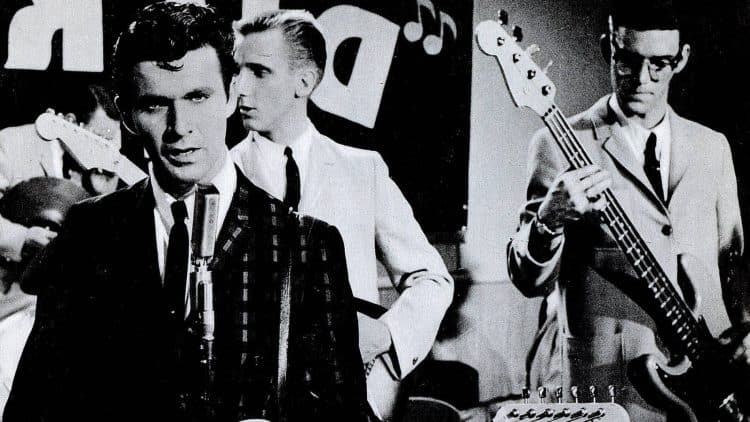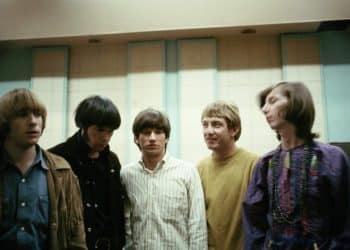Instrumental music transcends language barriers, inviting listeners on a journey of pure emotion and imagination. Devoid of lyrics, instrumental compositions harness the power of melody, harmony, and rhythm to convey feelings, tell stories, and evoke vivid imagery without the need for words. From soaring symphonies to intimate solo performances, instrumental music spans a vast spectrum of genres and styles, ranging from classical to jazz, from ambient to electronic.
Instrumental pieces allow musicians to express themselves freely, exploring the full range of their instruments’ capabilities and pushing the boundaries of musical expression. Without the constraints of lyrics, instrumentalists have the freedom to communicate through the language of music alone, allowing listeners to interpret and connect with the music in their own unique way.
Whether it’s the stirring melodies of a violin concerto, the intricate harmonies of a jazz improvisation, or the ethereal textures of a minimalist ambient piece, instrumental music has the power to transport listeners to other worlds, stir their emotions, and ignite their imagination. In its purest form, instrumental music speaks directly to the soul, offering solace, inspiration, and transcendence to all who lend an ear.
1. Blue Danube Waltz by Johann Strauss II
The “Blue Danube Waltz” by Johann Strauss II is a timeless masterpiece that epitomizes the elegance and grace of the Viennese waltz. Composed in 1866, this iconic piece has become one of the most famous and beloved waltzes in the classical repertoire.
From its enchanting opening bars to its exuberant crescendos and delicate flourishes, the “Blue Danube Waltz” captures the essence of the swirling currents and majestic beauty of the Danube River. With its lilting melodies and graceful rhythms, the waltz transports listeners to the grand ballrooms of 19th-century Vienna, where couples twirl and glide across the dance floor in a whirlwind of romance and splendor.
Strauss’ masterful orchestration and melodic inventiveness shine throughout the piece, as he weaves together a tapestry of enchanting themes and lush harmonies. The waltz’s infectious charm and irresistible energy make it a perennial favorite at concerts, weddings, and New Year’s celebrations around the world.
Beyond its aesthetic appeal, the “Blue Danube Waltz” holds a special place in the hearts of music lovers for its ability to evoke feelings of joy, nostalgia, and wonder. Its enduring popularity is a testament to the timeless beauty and universal appeal of Johann Strauss II’s music, ensuring its place in the pantheon of classical masterpieces for generations to come.
2. Carnival of the Animals: The Swan by Camille Saint-Saens
“The Swan” is a poignant and enchanting movement from Camille Saint-Saëns’ “Carnival of the Animals,” a suite of whimsical and imaginative compositions depicting various animals. Composed in 1886, “The Swan” stands out as one of the suite’s most iconic and beloved pieces.
With its graceful melody and serene atmosphere, “The Swan” conjures images of elegance and tranquility. Saint-Saëns’ lush harmonies and expressive melodies evoke the gentle movements of a swan gliding across a tranquil pond, capturing the beauty and majesty of this majestic bird.
The piece is characterized by its lyrical cello solo, which serves as the focal point of the composition. The cello’s rich, resonant tones soar above the delicate accompaniment, imbuing the music with a sense of warmth and intimacy.
“The Swan” has captivated audiences for generations with its timeless beauty and evocative imagery. Its serene melody and poignant harmonies evoke a sense of peace and introspection, transporting listeners to a world of beauty and tranquility.
Despite its simplicity, “The Swan” remains one of Saint-Saëns’ most enduring and beloved compositions, cherished by musicians and audiences alike for its beauty, elegance, and emotional depth. Whether performed as part of “Carnival of the Animals” or as a standalone piece, “The Swan” continues to enchant listeners with its timeless grace and beauty.
3. Autumn from The Four Seasons by Antonio Vivaldi
“Autumn” is a captivating concerto movement from Antonio Vivaldi’s “The Four Seasons,” a set of four violin concertos composed around 1720. Each concerto in the set is inspired by a different season of the year, and “Autumn” is the second concerto in the collection.
In “Autumn,” Vivaldi masterfully captures the essence of the fall season through evocative melodies, colorful harmonies, and vivid musical imagery. The movement is structured in three sections, each representing different aspects of autumn.
The opening section depicts the joyous celebration of the harvest season, with lively and energetic passages that evoke images of farmers gathering crops and celebrating the bounty of the land. The music is characterized by its playful and spirited rhythms, as well as its cheerful melodies.
The middle section of the movement shifts to a more reflective and introspective mood, as Vivaldi portrays the serene beauty of autumn landscapes. The music becomes more lyrical and melodic, with gentle and flowing passages that evoke the tranquility of falling leaves and golden sunlight.
The final section returns to the exuberant energy of the opening, bringing the concerto to a rousing conclusion with triumphant fanfares and exhilarating flourishes. The movement ends with a sense of joy and celebration, capturing the festive spirit of autumn.
“Autumn” is beloved for its vibrant orchestration, expressive melodies, and vivid musical imagery, making it one of the most cherished movements in Vivaldi’s “Four Seasons” and a perennial favorite among classical music enthusiasts.
4. Flight of the Bumblebee by Nikolai Rimsky-Korsakov
“Flight of the Bumblebee” is a virtuosic orchestral interlude from Nikolai Rimsky-Korsakov’s opera “The Tale of Tsar Saltan,” composed in 1899-1900. This piece has since become one of the most recognizable and frequently performed orchestral works in the classical repertoire.
The music vividly depicts the frenetic flight of a bumblebee, with rapid, swirling passages and intricate orchestration that emulate the insect’s buzzing and darting movements. Rimsky-Korsakov’s masterful composition showcases the technical abilities of the orchestra, particularly the strings, with lightning-fast runs and agile articulation.
Despite its brevity, “Flight of the Bumblebee” is renowned for its tremendous difficulty, both for individual instrumentalists and for the ensemble as a whole. It requires exceptional precision, agility, and coordination to navigate the rapid-fire passages and maintain the piece’s breakneck tempo.
“Flight of the Bumblebee” has transcended its original context as an opera interlude to become a standalone concert piece and a popular selection for orchestral showcases, competitions, and encores. Its playful and virtuosic nature continues to captivate audiences and challenge performers, ensuring its enduring popularity in the orchestral canon.
5. Prelude in C-sharp minor by Sergei Rachmaninoff
Sergei Rachmaninoff’s “Prelude in C-sharp minor” is a hauntingly beautiful and emotionally evocative piano composition that showcases the composer’s remarkable talent for crafting melodic richness and harmonic depth. Composed in 1892 when Rachmaninoff was just 19 years old, this prelude has since become one of his most celebrated and recognizable works.
From its opening bars, the Prelude immediately draws listeners in with its brooding and melancholic atmosphere. The piece unfolds with a sense of dark introspection, as Rachmaninoff explores the depths of human emotion through cascading arpeggios, lush harmonies, and soaring melodies. The recurring motif, with its descending chromaticism and haunting chords, creates a sense of longing and despair that resonates throughout the composition.
Despite its technical challenges, the Prelude is revered for its emotional depth and expressive power. Rachmaninoff’s masterful use of dynamics, phrasing, and rubato allows performers to imbue the music with their own interpretation, resulting in deeply personal and poignant performances.
The Prelude in C-sharp minor remains a beloved staple of the piano repertoire, captivating audiences with its profound beauty and emotional resonance. Its timeless appeal and universal themes of love, loss, and longing ensure that it will continue to enchant listeners for generations to come.
6. In the Hall of the Mountain King from Peer Gynt Suite by Edvard Grieg
“In the Hall of the Mountain King” is a thrilling and dynamic orchestral piece from Edvard Grieg’s “Peer Gynt Suite,” composed in 1875. Inspired by Henrik Ibsen’s play “Peer Gynt,” this movement captures the suspense and excitement of Peer Gynt’s encounter with the trolls in the mountains.
From its ominous opening notes to its frenetic climax, “In the Hall of the Mountain King” immerses listeners in a world of dark enchantment and eerie intrigue. Grieg’s masterful orchestration builds tension and suspense with driving rhythms, ominous brass fanfares, and pulsating strings, creating a sense of mounting danger and anticipation.
The piece reaches its electrifying peak as the tempo accelerates and the music crescendos to a frenzied climax, evoking the chaos and excitement of Peer Gynt’s desperate flight from the clutches of the mountain trolls. The relentless repetition of the main theme, with its insistent rhythmic pulse and ascending melodic lines, adds to the sense of urgency and impending doom.
“In the Hall of the Mountain King” is renowned for its dramatic intensity and theatrical flair, making it a favorite among audiences and orchestras alike. Its evocative imagery and exhilarating energy have cemented its place as one of Grieg’s most iconic and enduring compositions, ensuring its continued popularity in concert halls and film soundtracks around the world.
7. Moonlight Sonata by Ludwig van Beethoven
“Moonlight Sonata” is one of Ludwig van Beethoven’s most famous piano compositions, formally known as Piano Sonata No. 14 in C-sharp minor “Quasi una fantasia”, Op. 27, No. 2. Composed in 1801, it is admired for its hauntingly beautiful melody and emotive depth, making it a staple of classical piano repertoire.
The first movement of the sonata, marked Adagio sostenuto, is perhaps the most renowned. It opens with a mournful and atmospheric melody that flows seamlessly, evoking a sense of introspection and melancholy. The gently undulating triplets in the left hand create a sense of constant motion, while the right hand carries the melody with a delicate touch, giving the impression of moonlight shimmering on water.
The second movement, marked Allegretto, provides a stark contrast to the first. It features a more lively and rhythmic melody, with a playful yet melancholic character. This movement serves as a brief respite from the intensity of the first movement, offering moments of reflection and contemplation.
The third and final movement, marked Presto agitato, returns to the somber mood of the first movement. It is characterized by its fast tempo and tumultuous energy, with cascading arpeggios and dramatic chord progressions that create a sense of urgency and intensity. This movement showcases Beethoven’s mastery of musical expression, with its powerful emotions and virtuosic piano writing.
Overall, “Moonlight Sonata” is a masterpiece of classical music, beloved for its evocative melodies, expressive depth, and timeless beauty. It continues to captivate audiences and inspire musicians around the world, solidifying its place as one of Beethoven’s most enduring and cherished compositions.
8. Prelude No. 1 in C major by J.S. Bach
Johann Sebastian Bach’s “Prelude No. 1 in C major” from the “Well-Tempered Clavier, Book 1” is a timeless masterpiece of baroque keyboard music. Composed in the early 18th century, this prelude exemplifies Bach’s genius for crafting intricate and harmonically rich compositions.
From its opening bars, the Prelude immediately captivates listeners with its elegant simplicity and graceful melody. Bach’s mastery of counterpoint is on full display as he weaves together multiple voices in a seamless and contrapuntal texture, creating a sense of depth and complexity within the music.
The piece unfolds with a sense of serenity and tranquility, as the flowing arpeggios and cascading melodic lines evoke a feeling of lightness and buoyancy. Despite its technical challenges, the Prelude is accessible to listeners of all levels, with its transparent texture and clear harmonic progression inviting listeners to immerse themselves in its beauty.
Bach’s “Prelude No. 1 in C major” remains a beloved staple of the piano repertoire, cherished by pianists and audiences alike for its timeless elegance and profound musicality. Its serene melody and exquisite craftsmanship continue to inspire musicians and listeners around the world, making it a classic of the baroque era.
9. Thus Spoke Zarathustra by Richard Strauss
“Thus Spoke Zarathustra” is a symphonic tone poem composed by Richard Strauss in 1896. Inspired by Friedrich Nietzsche’s philosophical novel of the same name, the piece is perhaps best known for its iconic opening fanfare, which has been widely used in popular culture, particularly in the film “2001: A Space Odyssey.”
The tone poem is structured into nine sections, each of which represents a different aspect of Nietzsche’s philosophical ideas. The opening fanfare, titled “Sunrise,” is the most famous part of the work, and it is often used to depict grandeur and majesty. It begins with a series of powerful brass chords followed by a majestic rising theme in the strings, evoking the image of a majestic sunrise.
Following the fanfare, the piece transitions through various sections that explore different themes and moods, including nature, human existence, and the pursuit of truth and enlightenment. Strauss’s rich orchestration and vivid musical imagery bring Nietzsche’s philosophical concepts to life, with lush harmonies, soaring melodies, and dramatic shifts in dynamics and texture.
“Thus Spoke Zarathustra” is celebrated for its monumental scale, innovative use of orchestration, and profound philosophical depth. It has become one of Strauss’s most famous and enduring works, admired for its evocative power and lasting impact on the world of classical music.
10. The Entertainer by Scott Joplin
“The Entertainer” by Scott Joplin is a spirited and infectious ragtime composition that has become one of the most iconic and recognizable pieces in American music. Composed in 1902, this lively piano rag exudes energy, charm, and a sense of carefree joy that captivates listeners of all ages.
From its syncopated melodies to its infectious rhythms, “The Entertainer” embodies the essence of ragtime music, a genre characterized by its lively syncopation and distinctive “ragged” rhythms. Joplin’s masterful use of syncopation, along with his playful melodies and catchy motifs, creates a sense of excitement and spontaneity that is impossible to resist.
“The Entertainer” unfolds with a series of lively themes and variations, each building upon the last to create a sense of momentum and anticipation. The piece is filled with playful flourishes, unexpected twists and turns, and moments of virtuosic brilliance, showcasing Joplin’s skill as both a composer and a pianist.
Despite its light-hearted and carefree demeanor, “The Entertainer” also possesses a depth and complexity that rewards careful listening. Beneath its jaunty exterior lies a wealth of musical invention and craftsmanship, making it a favorite among pianists and music enthusiasts alike.
“The Entertainer” has endured as one of Scott Joplin’s most beloved and enduring compositions, cherished for its infectious energy, timeless charm, and undeniable joie de vivre. Its irresistible melodies and toe-tapping rhythms continue to bring joy and delight to audiences around the world, making it a classic of American music.
11. Ride of the Valkyries by Richard Wagner
“Ride of the Valkyries” is a powerful and exhilarating orchestral composition by Richard Wagner, taken from his opera “Die Walküre,” the second installment of his monumental “Ring Cycle.” Composed in the mid-19th century, this iconic piece has become one of Wagner’s most famous and recognizable works.
From its dramatic opening fanfare to its thunderous crescendos and soaring melodies, “Ride of the Valkyries” evokes a sense of grandeur, heroism, and excitement. The piece is characterized by its driving rhythm, bold brass flourishes, and exhilarating string passages, which together create a thrilling sense of momentum and intensity.
“Ride of the Valkyries” is best known for its use in depicting the Valkyries, mythical warrior maidens who carry fallen heroes to Valhalla, the hall of the gods. Wagner’s stirring music captures the Valkyries’ fearless spirit and indomitable energy as they ride through the sky on their noble steeds.
The piece reaches its electrifying climax as the Valkyries’ call to arms echoes through the heavens, building to a triumphant and exhilarating conclusion. Wagner’s masterful orchestration and dramatic flair make “Ride of the Valkyries” a thrilling and unforgettable musical experience, both in the opera house and in concert halls around the world.
“Ride of the Valkyries” has endured as one of Wagner’s most iconic and enduring compositions, cherished for its breathtaking beauty, epic scope, and timeless appeal. Its stirring melodies and powerful emotions continue to captivate audiences, making it a classic of the operatic repertoire.
12. Asturias (Leyenda) by Isaac Albeniz
“Asturias (Leyenda)” is a renowned classical guitar piece composed by the Spanish composer and pianist Isaac Albéniz. Originally part of his suite for piano, “Suite Española,” Op. 47, the piece was later transcribed for guitar by Francisco Tárrega, one of the most influential guitarists and composers of the Romantic era.
“Asturias (Leyenda)” is a musical depiction of the rugged and mountainous region of Asturias in northern Spain. The piece is characterized by its evocative melodies, fiery rhythms, and rich harmonic textures, which capture the essence of Spanish folk music and the spirit of the Asturian landscape.
The piece opens with a dramatic and melancholic melody played in the low register of the guitar, creating a sense of mystery and anticipation. This is followed by a series of rapid arpeggios and cascading scales, which evoke the sound of Spanish flamenco guitar music and showcase the virtuosic capabilities of the instrument.
Throughout “Asturias (Leyenda),” Albéniz incorporates elements of Spanish folk music, including traditional melodies and rhythms such as the flamenco “bulerías” and “soleares.” These folk influences, combined with Albéniz’s lush harmonies and lush orchestration, create a captivating and immersive musical experience that transports listeners to the heart of Spain.
“Asturias (Leyenda)” has become one of the most beloved and frequently performed pieces in the classical guitar repertoire. Its passionate melodies, rhythmic vitality, and evocative atmosphere continue to captivate audiences and inspire guitarists around the world, solidifying its status as a masterpiece of Spanish classical music.
13. Canon in D by Johann Pachelbel
“Canon in D” by Johann Pachelbel is a timeless masterpiece of baroque music that has captivated audiences for centuries with its elegant simplicity and profound beauty. Composed around 1680, this iconic piece is renowned for its hauntingly beautiful melody, graceful harmonies, and exquisite craftsmanship.
At the heart of “Canon in D” is its mesmerizing canon form, in which a simple melodic line is repeated and imitated by different voices, creating a rich tapestry of sound. Pachelbel’s masterful use of counterpoint and harmony adds depth and complexity to the music, while its gentle rhythm and flowing melody evoke a sense of serenity and tranquility.
The piece unfolds with a sense of grace and elegance, as the melodic line gradually builds and develops, weaving in and out of the musical texture with effortless fluidity. Each repetition of the canon adds a new layer of beauty and complexity, drawing listeners deeper into its enchanting spell.
“Canon in D” has endured as one of Pachelbel’s most beloved and enduring compositions, cherished for its timeless elegance and emotional resonance. Its haunting melody and exquisite harmonies continue to inspire musicians and listeners alike, making it a perennial favorite for weddings, concerts, and other special occasions.
14. Fur Elise by Ludwig van Beethoven
“Für Elise” is one of Ludwig van Beethoven’s most beloved and recognizable compositions. It is a solo piano piece in A minor, composed around 1810, though it was not published until many years after Beethoven’s death.
The piece is known for its simple yet elegant melody, which is instantly recognizable to many listeners. It begins with a delicate and expressive theme in the right hand, accompanied by a steady arpeggiated pattern in the left hand. This theme is repeated and developed throughout the piece, with variations in rhythm, dynamics, and harmony.
Despite its popularity, the true identity of “Elise” remains a mystery. The title “Für Elise” translates to “For Elise” in English, suggesting that the piece may have been dedicated to a particular individual named Elise. However, the identity of this person has never been definitively confirmed, and the piece’s origins remain the subject of speculation and debate among musicologists.
“Für Elise” is often regarded as a quintessential example of Beethoven’s piano music, showcasing his mastery of melody, harmony, and form. Its expressive simplicity and timeless beauty have ensured its enduring popularity among pianists and audiences alike, making it one of the most beloved and frequently performed piano pieces in the classical repertoire.
15. Clair de Lune by Claude Debussy
“Clair de Lune” by Claude Debussy is a luminous and ethereal piano composition that epitomizes the impressionistic style of the late 19th and early 20th centuries. Composed in 1890, this evocative piece is the third movement of Debussy’s “Suite bergamasque” and has become one of his most beloved and iconic works.
“Clair de Lune,” which translates to “moonlight” in English, transports listeners to a dreamlike world of mystery and enchantment. Debussy’s delicate and impressionistic approach to harmony, rhythm, and melody creates a sense of shimmering beauty and subtle nuance, evoking the tranquility and magic of a moonlit night.
The piece unfolds with a series of cascading arpeggios and lush harmonies, evoking the gentle ebb and flow of moonlight on water. Its hauntingly beautiful melody weaves in and out of the musical texture, creating a sense of longing and introspection that resonates with listeners on a deep emotional level.
“Clair de Lune” has endured as one of Debussy’s most beloved and enduring compositions, cherished for its timeless beauty and emotional depth. Its serene melody and exquisite harmonies continue to captivate audiences around the world, making it a classic of the piano repertoire and a testament to Debussy’s genius as a composer.









